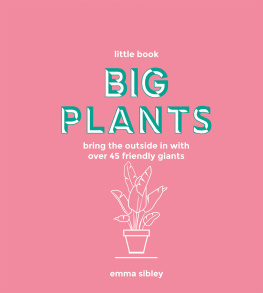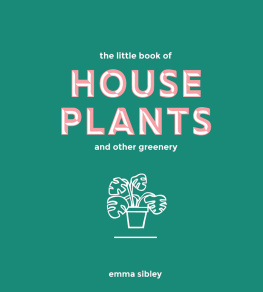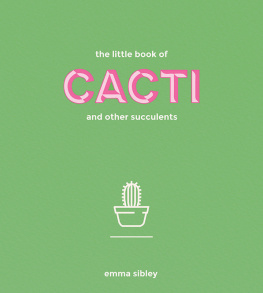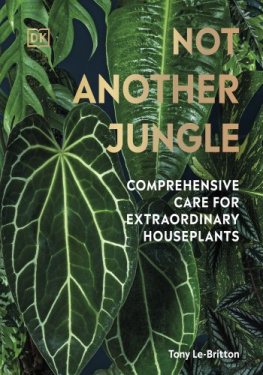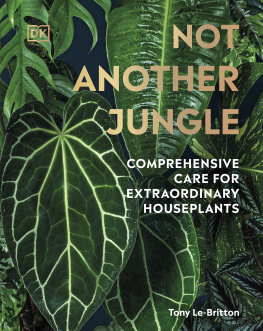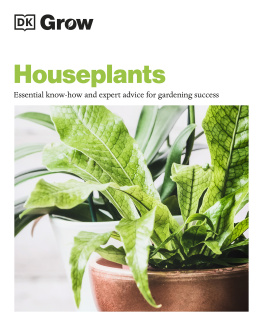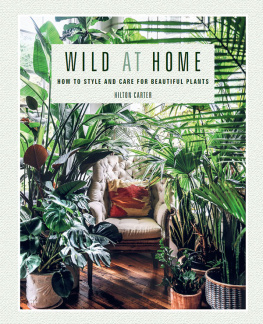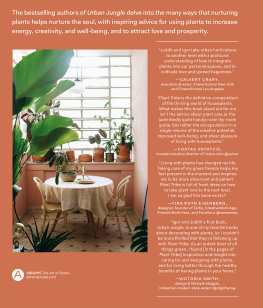


CONTENTS


I would love to dedicate this book to my grandparents, Ben and Ethel Howard, for passing on their green fingers to me.
BIG PLANTS FOR THE HOME
When I see a large, handsome house plant, I often wonder about the journey it has taken to reach that size. Has it been nurtured lovingly by one owner, swapped as part of a house plant enthusiasts group, or passed down from a family member, with propagations given away and shared with relatives and friends?
Whether you prefer to buy a young plant so that you can watch it grow and flourish or you are all about the instant gratification of bringing home a large, ready-formed specimen, there is one thing you can almost always guarantee your plant will continue to grow and adapt to fill your space.
This book explains how to nurture and care for these large plants. It will take you through over 45 different house plants as well as featuring interviews with house plant aficionados about their favourite giants.
HOW TO USE THIS BOOk
Each entry includes key information about caring for that particular plant. All the information is clearly organised under appropriate symbols which will help you give your plants everything they need to grow and thrive.
KEY TO SYMBOLS
 | LIGHT |
 | HEIGHT |
 | TOXICITY |
 | WATER |
 | FEED |
 | AIR PURIFIER |
 | MISTING |
Each plant is given its common and Latin names; occasionally these are the same. The Latin or botanical name provides information about the relationship between plants and is known as the taxonomic status. All plants belong to a particular family and these are divided into genera (the plural of genus). The Latin name of each plant consists of two words: the genus and the species. The genus is a collective name for a group of plants, and the species (or specific epithet) tells you more about a particular plant.
House plants have three basic requirements: light, water and soil. Provide them with the right conditions, and you will have happy, healthy plants.
LIGHT LEVELS
The lighting advice in this book is just a guideline. If your plant is not looking happy, experiment with different positions.
BRIGHT LIGHT
This is also referred to as direct sunlight (Sun). A west- or south-facing window will provide bright light, which means receiving 5 to 6 hours of direct sunlight a day.
BRIGHT, INDIRECT LIGHT
This is also referred to as bright, indirect sunlight (BIDL). The windowsill of an east-facing window, or a plant set back about 60cm (2ft) or so from a west- or south-facing window will provide bright, indirect light. This ensures that the plant is not exposed to direct sunlight, but it is receiving plenty of light. If youd like your plant to sit on the sill of a west- or south-facing window, introduce a sheer curtain or sun shade.
LOW LIGHT
A north-facing window provides low light, or any room that is obviously in shade (from other buildings or trees) and doesnt get any direct sunlight during the day.
WATERING
As with light levels, the watering information given with each plant entry is only a guideline. For most house plants, the soil should dry out slightly between watering. The exceptions are those plants that either like a very wet or a very dry soil. To test, dip your finger 2.5cm (1in) or so in the compost and if its dry, give the plant a water with tepid water. If not, wait a few days and try again. Most house plants need good drainage and hate standing in water. Ensure that the actual plant pot has drainage holes in the base, and that the soil is free-draining (see below). Dont let the plant sit in a saucer or pot of water. If the plant is too heavy to lift in order to drain away excess water from its saucer, use a sponge to draw the water away.
SOIL AND FEEDING
Its advisable to use a dedicated house plant compost for indoor plants, which is designed to give your plants the right medium to grow and flourish. If you feel the soil needs to be more free-draining, add a handful of horticultural sand or grit to the mix. To feed your plants, use a liquid house plant feed diluted in water, following the manufacturers instructions. Always add feed to damp soil, never to dry as this could burn the roots.

One of the key decisions you need to make when buying a plant is whether you want a small one that has the potential to grow into a big house plant or whether you would prefer to start with a plant thats already an adequate size. Not all plants will grow into a big room filler. Some plants, such as the Monstera delicosa, have leaves that increase in size as the whole plant develops. Compare this to its sister, the Monstera adansonii, which will grow to take up more space but its leaves will pretty much stay the same size. Most garden centres and plant nurseries will stock younger and smaller specimens of the plants mentioned in this book, which will allow you to move and train them to adapt to your home as they grow. When investing in a larger plant, you will need to know where you are going to place it so that there will be enough room for you both to live in harmony together! (See the .)

Its all well and good wanting large plants, but you need to be able to live with them and provide them with the space to move and grow without being damaged or unsettled. However, with some forethought even a small apartment can accommodate at least one statement plant.
Look out for suitable spots. This could be a corner, next to the sofa a tall Kentia Palm would be very at home here, especially if it is a darkish location. A small space on a shelf is the perfect perch for a long String of Hearts or a Hoya. The beauty of this position is that as the plants grow you can continue to move them up the shelves. Similarly, you can find some beautiful indoor wall-mounted plant pots these days that create a feature on a bare wall. Use them instead of a framed print, or place alongside one.
Indoor plant clips are also a genius way of training a vine, such as Devils Ivy, to climb up a wall to form a living backdrop as opposed to hanging it from a pot or clambering up a moss stick. Hide the plant pot behind a sofa or beside a chest of drawers to save on space.
Next page
